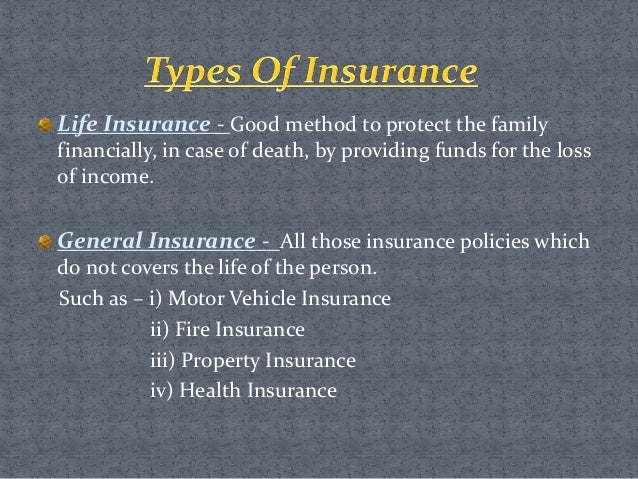Ind AS 117 And The Future Of Insurance In India

Table of Contents
Understanding Ind AS 117 and its Implications
Ind AS 117, mirroring the International Financial Reporting Standard 17 (IFRS 17), introduces a fundamental shift in how insurance contracts are accounted for. This contrasts sharply with previous accounting standards, requiring a more comprehensive and nuanced approach.
Key Changes Introduced by Ind AS 117:
Ind AS 117 brings about several key changes, significantly altering the financial reporting landscape for Indian insurers:
- Shift from incurred claims to a more comprehensive approach to contract accounting: The traditional incurred claims approach is replaced by a model that considers the entire lifecycle of an insurance contract, including future expected cash flows. This requires a more sophisticated understanding of the liabilities associated with these contracts.
- Impact on valuation of insurance contracts and related liabilities: The valuation of insurance contracts and related liabilities becomes more complex, necessitating advanced actuarial techniques and more robust data management systems. This impacts the reported financial position of insurers significantly.
- Increased complexity in financial reporting and disclosures: Insurers must now provide more detailed and transparent disclosures regarding their insurance contracts, leading to more complex financial statements.
- Requirement for enhanced data management and analytical capabilities: Accurate financial reporting under Ind AS 117 necessitates robust data management systems capable of handling vast amounts of information.
- Specific changes in revenue recognition: Revenue recognition is now aligned with the transfer of control of insurance services, rather than solely based on the receipt of premiums. This affects revenue streams and timing.
- Impact on capital adequacy calculations: Solvency ratios and capital adequacy requirements are directly affected by the changes in liability valuation, leading to potential impacts on the regulatory landscape.
Comparison with Previous Accounting Standards:
Ind AS 117 represents a significant departure from previous Indian accounting standards for insurance contracts. The older standards were often criticized for their lack of transparency and their inability to accurately reflect the financial risks inherent in the insurance business. Ind AS 117 aims to address these shortcomings, providing a more comprehensive and consistent framework for accounting for insurance contracts globally. The transition period presented challenges, requiring significant investments in IT infrastructure, staff training, and process re-engineering.
Impact on Solvency and Capital Requirements:
Ind AS 117 significantly impacts the calculation of solvency ratios and regulatory capital requirements for Indian insurance companies. The more comprehensive liability valuation can lead to higher capital requirements for some insurers, particularly those with long-tail liabilities.
- How Ind AS 117 affects the calculation of solvency ratios: The new valuation methods impact the calculation of key solvency ratios, potentially affecting an insurer's ability to meet regulatory requirements.
- Changes in regulatory capital requirements for insurance companies: Some insurers may need to increase their capital reserves to meet the new solvency requirements under Ind AS 117.
- Potential impact on mergers and acquisitions in the sector: The impact on capital adequacy may influence mergers and acquisition activities in the Indian insurance industry.
- Implications for insurers' risk management strategies: Insurers need to refine their risk management strategies to adapt to the new accounting requirements and maintain adequate capital levels.
Challenges and Opportunities for the Indian Insurance Industry
The implementation of Ind AS 117 presents both significant challenges and exciting opportunities for the Indian insurance industry.
Challenges of Implementing Ind AS 117:
The transition to Ind AS 117 is not without its hurdles:
- Data infrastructure limitations and investment needs: Many Indian insurers lack the robust data infrastructure necessary to support the complex calculations required under Ind AS 117. Significant investment in IT systems and data analytics capabilities is needed.
- Need for upskilling and training of accounting professionals: Accounting professionals need significant training to understand and apply the new accounting standard effectively.
- Potential initial increase in operational costs: The increased complexity of financial reporting and data management can lead to higher operational costs in the short term.
- Complexity of the standard for smaller insurance companies: Smaller insurance companies may find it particularly challenging to adapt to the increased complexity of Ind AS 117.
- Challenges related to data integration and reconciliation: Integrating data from various sources and ensuring data accuracy and reconciliation can pose significant challenges.
- Potential for audit complexities: The increased complexity may lead to more extensive and potentially costly audits.
Opportunities Created by Ind AS 117:
Despite the challenges, Ind AS 117 also presents numerous opportunities:
- Improved transparency and comparability of financial statements: The new standard enhances the transparency and comparability of financial statements, allowing investors and other stakeholders to make more informed decisions.
- Enhanced risk management and decision-making: The more comprehensive approach to liability valuation fosters better risk management and enables insurers to make more informed business decisions.
- Attracting foreign investment and fostering greater confidence in the sector: Improved financial reporting practices can attract foreign investment and build greater confidence in the Indian insurance sector.
- A more accurate reflection of the insurance company's financial position: Ind AS 117 provides a more accurate and comprehensive representation of an insurance company's financial health.
- Opportunities for innovation in insurance products: The new standard may encourage innovation in insurance product design and pricing.
- Potential for improved investor relations: Improved transparency and financial reporting can strengthen relationships with investors.
The Future of Insurance Accounting in India under Ind AS 117
The future of insurance accounting in India is inextricably linked to the successful implementation and adaptation of Ind AS 117.
Technological Advancements and their Role:
Technology plays a crucial role in addressing the challenges associated with Ind AS 117:
- The role of technology in addressing data challenges: Advanced technologies such as cloud computing, big data analytics, and artificial intelligence (AI) can help insurers manage vast amounts of data efficiently.
- Adoption of AI and machine learning for financial reporting: AI and machine learning can automate many of the complex calculations and reporting processes required under Ind AS 117.
- Use of specialized software for Ind AS 117 compliance: Specialized software solutions are emerging to streamline the processes required for compliance with Ind AS 117.
Regulatory Landscape and Future Outlook:
The regulatory landscape will continue to evolve in response to the implementation of Ind AS 117:
- The role of IRDAI in guiding the implementation of Ind AS 117: The Insurance Regulatory and Development Authority of India (IRDAI) plays a key role in guiding the implementation of Ind AS 117 and addressing any arising challenges.
- Potential future changes to Ind AS 117 based on industry experience: Further refinements and adjustments to Ind AS 117 are possible based on the industry's experiences.
- Convergence with global accounting standards: India's convergence with global accounting standards, exemplified by Ind AS 117's alignment with IFRS 17, enhances international comparability and transparency.
- Ongoing discussion regarding modifications to the standard: Continuous dialogue and feedback mechanisms are essential for refining the standard and ensuring its effective application.
- Future impact on insurance pricing and product development: The changes may influence insurance pricing strategies and necessitate adaptations in product development.
Conclusion:
The adoption of Ind AS 117 is a transformative event for the Indian insurance sector. While the transition presents challenges requiring significant investment in technology and training, it ultimately paves the way for enhanced transparency, improved risk management, and a more globally competitive insurance industry. Proactive adaptation, embracing technological solutions, and leveraging the opportunities offered by improved financial reporting are critical for the long-term success of Indian insurance companies. Understanding and effectively implementing Ind AS 117 is not just a compliance issue; it's a strategic imperative for the future of insurance in India. Learn more about adapting to the changing landscape of Ind AS 117 and its impact on the Indian insurance market today!

Featured Posts
-
 Rapat Menko Ahy Update Terbaru Proyek Strategis Nasional Giant Sea Wall
May 15, 2025
Rapat Menko Ahy Update Terbaru Proyek Strategis Nasional Giant Sea Wall
May 15, 2025 -
 High Bids Mark Kid Cudi Personal Items Auction
May 15, 2025
High Bids Mark Kid Cudi Personal Items Auction
May 15, 2025 -
 Euphorias Future Exploring The Possibility Of A Season 4 And Beyond
May 15, 2025
Euphorias Future Exploring The Possibility Of A Season 4 And Beyond
May 15, 2025 -
 Hornets Vs Celtics Prediction Picks And Odds For Tonights Nba Game
May 15, 2025
Hornets Vs Celtics Prediction Picks And Odds For Tonights Nba Game
May 15, 2025 -
 Lackluster Dodger Offense Leads To Defeat Against Cubs
May 15, 2025
Lackluster Dodger Offense Leads To Defeat Against Cubs
May 15, 2025
